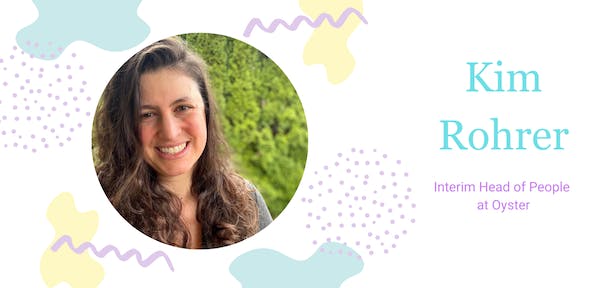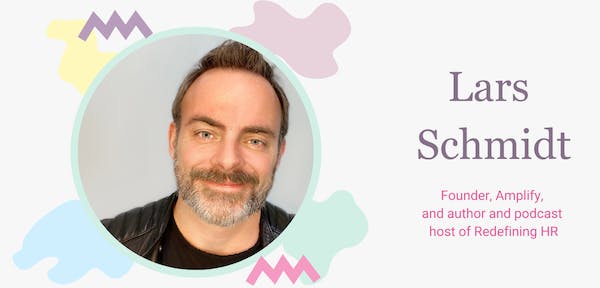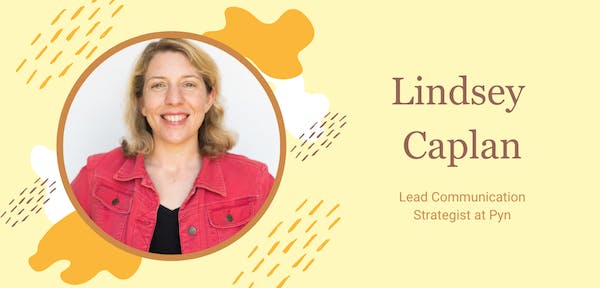
7 experts weigh in: What 2021 taught me about employee communication
Written by
Lindsey Caplan, Contributor
2021 has been ripe for experiments when it comes to how we communicate in our organizations. Hybrid, remote, distributed, and more...no matter our ways of working, we’ve leaned into and looked for ways to communicate asynchronously, aka, not occurring at the same time. And no, simply sending more emails won’t cut it, especially when employees say they’ve seen a 100% spike in email since COVID.
Pyn has compiled the lessons learned in employee communication from top HR leaders around the world. We’ve also shared some of our own learnings on async communication at Pyn. These diverse viewpoints remind us that while there isn’t a one-size-fits-all solution when it comes to communicating with employees, the struggles and challenges we’ve faced in HR are similar. We’re all in this together!
Check out our lessons learned and connect with us on LinkedIn to share your own communication lessons and what you’re eager to try in 2022!

Kim Rohrer, Interim Head of People at Oyster
What have you learned about employee communication in 2021?
You really have to be intentional about your communication. Think about how employees will receive it, and the larger context in which they are receiving it. For example, are you emailing them about an important policy change on the same day as a bunch of other notices are going out? Are you asking for action, or just giving an FYI? What else are employees expected to learn or do right now?
What’s one communication experiment or adjustment you’ve made?
Creating an explicit cascading/waterfalling communication path after executive team meetings, to disperse and socialize decisions being made behind closed doors.
What’s one piece of advice you’d give an HR Director at a fast-growth company about communicating to employees asynchronously
Think about format, timing, and desired outcome. What are you communicating where, when, and why? Is it working? How will you know if it is? Don't be afraid to test and iterate.

Dipti Salopek, Chief of Staff at Snyk, former VP People
What have you learned about employee communication in 2021?
Communication has become a lot more disaggregated - as in taking place across multiple platforms, leading to more chaos and confusion. People are making up for this by over-communicating, but it's leading to information overload that is unfortunately having the opposite impact - that employees are just reading and seeing less rather than more. In a world where companies are growing rapidly + remotely, a means of corralling information into what is most topical for employees at a specific point in time is the best way to get employees to actually focus on the pieces most relevant to them.
What’s one communication experiment or adjustment you’ve made?
We transitioned heavily towards async collaboration - building a muscle around co-building documents, ideas, project management etc online but not at the same time.
What’s one piece of advice you’d give an HR Director at a fast-growth company about communicating to employees asynchronously?
Building a habit or muscle around this, if it doesn't exist already, is harder than you'd think. If you want this behaviour embedded, spend the time having deliberate and intentional conversations around the company around what this would look like, what behaviours need to change, and where the challenges lie that we should all be mindful of.
Check out our case study with Snyk to see how they use Pyn to support new hires and new managers

Jon Williams, Cofounder and Co-CEO at Pyn
What have you learned about employee communication in 2021?
Two paradoxical things: fewer meetings is generally better, but the flipside is you need to create “blank” and unstructured spaces for people to interact as well.
What’s one communication experiment or adjustment you’ve made?
I’ve moved the majority of my operational and day-to-day communications to be in an async format.
What’s one piece of advice you’d give an HR Director at a fast-growth company about communicating to employees asynchronously?
Take the extra time to communicate and reinforce habits - etc, threading, emoji reactions, prefixing messages with intent.

Lars Schmidt, Founder, Amplify, and author and podcast host of Redefining HR
What’s one piece of advice you’d give an HR Director at a fast-growth company about communicating to employees asynchronously?
Less is more. When communicating async we really have to be mindful of not just what we write - but how we write it. Your messages should be clear, concise, and where appropriate actionable. Think bullets and other short-form writing so readers can easily consume your ideas on whatever device they're using.

Lindsey Caplan, Lead Communication Strategist at Pyn
What have you learned about employee communication in 2021?
Being direct is a kindness. Employees want to perform well. We forget it’s okay and helpful to tell employees exactly what to do so they can be successful. Don’t make them hunt.
What’s one communication experiment or adjustment you’ve made?
When composing an email or slack I try to ask myself: what do I need from the person I’m communicating with? Am I informing them or asking them to take action? The answer changes how I write my subject line. Oftentimes our subject lines are topic-oriented and we unintentionally bury the action in the body of the email.
What’s one piece of advice you’d give an HR Director at a fast-growth company about communicating to employees asynchronously?
“Pull together, and push apart”. If you’re pushing information on people to inform them or for compliance, then rely on push communication via asynchronous methods. If however, you need buy-in, ownership, or behavior change, that is worth the time and effort to pull people together synchronously. An example for manager development would be to push out an email on leave policies but pull people together to learn how to practice giving feedback.
Get more communication tips from Lindsey in our eBook, 5 Employee Communication Tips every HR Professional Should Know

Talie Schwager, VP People at Coindesk
What have you learned about employee communication in 2021?
Ensure that the most salient information is relayed to the most relevant parties at the optimal time. Context is also salient when communicating to staff members or stakeholders. Why is it important for folks to pay attention to the message that has been sent or conveyed verbally? Demonstrating the WIIFME (what’s in it for me?) is critical to get a message across.
Last, I’ve learned that feedback is critical for any form of communication. By listening to staff on what works and what doesn’t work, you are set up to know how to improve and better communicate. Keeping that feedback loop open is vital!
What’s one communication experiment or adjustment you’ve made?
We’ve implemented Pyn to help streamline communication to different groups in the organisation who need to attain various pieces of information at various times as we launch people initiatives across the company.
We also try to make sure that communication is created in a lattice within the organization. At all hands, we have groups from across the organization share their wins; at department head meetings we’ve found that information is disseminated in a better fashion when non-department heads have the opportunity to present.
What’s one piece of advice you’d give an HR Director at a fast-growth company about communicating to employees asynchronously?
Set expectations for the appropriate channels of communication. Concretely, Slack may be used for quick communication and easy-to-get answers. Email might be used for more formal communication and external parties.
It is also critical that the right tools/systems/technologies are used and are consistently adopted throughout the organization. There is cause for confusion when multiple tools are used to accomplish the same objective. It also helps new joiners who step into the fast-growth environment to understand the common practices of the company and avoid scrambling to get the information they need.
Finally, documentation is at the core of asynchronous communication and collaboration. Leaving a trail of progress for others to pick up where their colleagues left off and can avoid asking around about where something may be located or what the status might be.

Joris Luijke, Cofounder and Co-CEO at Pyn
What have you learned about employee communication in 2021?
People feel genuinely overwhelmed with the volume of communication. The number of slack and emails people receive is crazy. Yet, those same people say they want more information, especially this past year. There is obviously a disconnect between people’s needs and what companies are providing.
What’s one communication experiment or adjustment you’ve made?
With all this communication overload, it’s even more important to get to the point quickly. BLUF (bottom line up front) forces me to consider starting any message with its key information (the “bottom line”). It gives the reader the most important information first. Doing this before providing additional context helps the recipient (I’ve heard folks in the team much prefer this) and it has helped me to shorten my communications significantly.
What’s one piece of advice you’d give an HR Director at a fast-growth company about communicating to employees asynchronously
Stop sending generic all-company communications where possible. Stats from Pyn tell us larger company readership of these types of messages is woefully low, at ~30%. Use software like Pyn that allows you to automatically send messages to people as they experience something, and personalize the message based on their demographic.
Say you want to communicate to managers to create better 90-day plans when onboarding new hires. It’s better to send that information automatically to managers when they are actually about to onboard a new hire, and to present it to them in the context of their team (eg, a 90-day plan for new hires in engineering).
If you're ready to see how automating employee communication with Pyn can help you save time and support your employees along their journey, request a demo with Pyn today!
